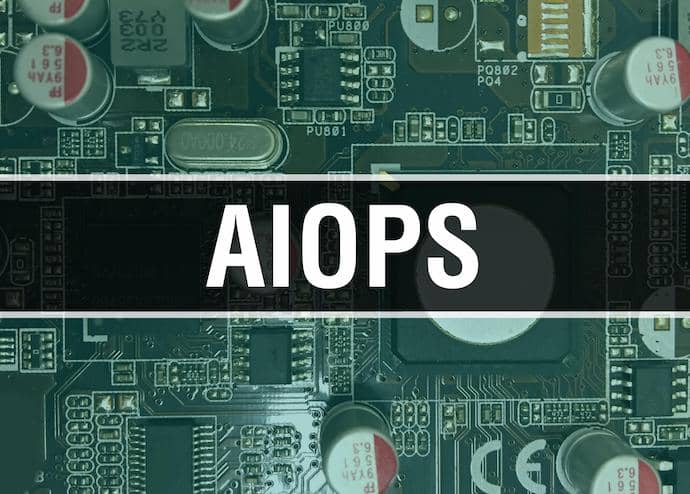Software-defined WAN (SD-WAN) continues to be a game changer in any organization’s digital transformation journey. SD-WAN’s ability to intelligently steer application traffic, enforce service level agreements (SLAs) and provide granular visibility has made it a de facto solution to deliver branch transformation, cloud adoption, and support for the hybrid workforce. Although legacy SD-WAN manages to automate some day 0 operations with zero-touch provisioning and centralized configuration, it still requires significant human intervention to identify, troubleshoot and resolve issues, resulting in operational complexity and costs.
Evolution of AIOps for SD-WAN
In some ways, legacy SD-WAN has managed to hide underlying network problems by addressing performance issues with its rudimentary techniques, like failover and redundancy. As a result, infrastructure teams continue to react to a critical outage rather than proactively identifying anomalies and resolving them. To overcome these challenges, organizations are ramping up using artificial intelligence for operations (AIOps) capabilities to reduce operational complexity and costs. Gartner recognizes this trend by stating, “By 2025, 40% of enterprises with SD-WAN deployments will use artificial intelligence (AI) functions to automate Day 2 operations, compared with fewer than 5% in 2021.”
AIOps effectively curates large operational data gathered using SD-WAN analytics to correlate events, provide deep WAN insights and auto remediate issues that simplify operations. However, some organizations are taking a cautious approach to implementing AIOps due to the challenges in measuring its values and realizing their benefits. AIOps adoption is expanding, but infrastructure leaders are looking for a strategic approach that ensures tangible business outcomes.
Changing the Mindset
Infrastructure leaders should understand that the right approach to implementing AIOps for SD-WAN will deliver the following benefits:Improve observability by auto monitoring the network and proactively identifying critical events, so IT teams become aware of the problems immediately and act quickly. AI and machine learning (ML) is used to correlate thousands of events and data to provide meaningful insights into network and application performance issues. Innovative deep neural network models and Seq2Seq ML models help with forecasting and anomaly detection, otherwise difficult for humans to identify.
Provide interpretable assessments with pattern discovery that identifies root cause analysis for network and application performance issues along with recommendations to resolve them proactively.
Deliver proactive remediation by leveraging topological change data, business policy configuration and access controls to auto remediate with the most relevant solutions from multiple possibilities that may exist.
Empowering Conversational AI with SD-WAN chatbot based on natural language understanding (NLU) for our customers. This virtual assistant helps customers in quickly providing information on network and applications issues, significantly decreasing user-generated IT tickets and remediating them, in an easy-to-use interface.
Caption: ML-based capacity forecast and anomaly detection
Focus on Business Outcomes
SD-WAN solutions have expanded visibility into performance, user experience, network connectivity and business continuity, leading to an explosion in data. It does not make sense to constantly depend on human interventions to gain insights by combing through thousands of data points or events that have led to the rapid adoption of AIOps. At the same time, there are concerns about the accuracy of AI systems outputs as most of these derivations are hidden. Infrastructure leaders should implement an incremental approach that allows them to leverage AIOps and interpret insights to provide root cause analysis that leads to a conclusion by these systems. They should consider the following steps to reliably implement AIOps for SD-WAN, including:Discover critical network/topology changes by tracking branch infrastructure products, applications and users to build a topological representation of the network and identify critical changes that negatively impact performance and alert users. Use ML based baselines and identify anomalies.Leverage deep insights with predictive analytics by processing large volumes of data and events to identify incidents and proactively predict issues that enable IT staff to resolve issues proactively.Use guided recommendations for faster resolution by continually learning and refining insights to provide step-by-step guidance to administrators to resolve issues and provide confirmation that the problem has been resolved.Allow auto-remediation by tuning application SLAs and business policies with proven assessments of incidents and responses to trigger an issue fixation automatically.
Understand the AIOps Building Blocks for SD-WAN
An effective AIOps for SD-WAN leverages meaningful data to provide explainable and interpretable outcomes. Understanding how and what data is ingested by AIOps and the techniques implemented to analyze such data to produce actionable outcomes is essential. Here are some of the building blocks that ensure the right approach to implementing AIOps for SD-WAN:Data Lake – Collected in real-time and historical, AIOps should be capable of analyzing large volumes of data collected across multiple sources including applications, networks and users. This data is then cleansed, correlated, optimized, and tracked, required for deeper and meaningful insights.
Deep Neural network and Machine Learning – Implement pattern recognition and prediction with DNNs, supervised and unsupervised machine learning models to enable baselining, anomaly detection, root cause analysis and network topology discovery to provide predictive analytics, guided and automated remediation.
Centralized Dashboard – AIOps-enabled insights and analytics should be easily consumed by the IT staff from a centralized console that provides SD-WAN analytics. Without such an integrated offering, AIOps becomes another isolated automation tool irrelevant to troubleshooting and resolving issues based on SD-WAN analytics.
The Future is AIOps
Organizations are under pressure to improve performance and deliver an exceptional user experience for applications. A predictive SD-WAN solution leveraging AIOps can help organizations to auto remediate issues, improve user experience and enhance business outcomes.
As a leader in offering AIOps for SD-WAN, we at Palo Alto Networks understand our customer’s requirements and are innovating on behalf of our customers to simplify tedious network operations. Join us for SASE Converge 2022 by Palo Alto Networks, the industry’s leading conference on SASE. In this exclusive two-day virtual summit, you’ll hear from the brightest minds as they define the future of SD-WAN, Zero Trust Network Access, and SASE.
Sutapa Bansal is a director of product management at Palo Alto Networks. She is customer obsessed and experienced in leading AI/ML and cloud products.


